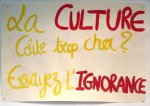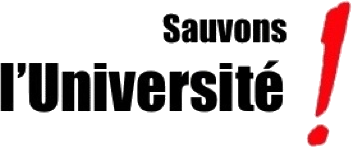Accueil > Revue de presse > À l’étranger > "The Universities in Trouble", Andrew Delbanco, The New York Review of (...)
 "The Universities in Trouble", Andrew Delbanco, The New York Review of Books, 14 mai 2009
"The Universities in Trouble", Andrew Delbanco, The New York Review of Books, 14 mai 2009
mardi 23 juin 2009, par
Pioneering Portfolio Management : An Unconventional Approach to Institutional Investment
by David F. Swensen, Free Press, 408 pp., $35.00
Tearing Down the Gates : Confronting the Class Divide in American Education
by Peter Sacks, University of California Press, 376 pp., $24.95
Creating a Class : College Admissions and the Education of Elites
by Mitchell L. Stevens, Harvard University Press, 308 pp., $25.95
Fulfilling the Commitment : Recommendations for Reforming Federal Student Aid in Brief
by Sandy Baum, Michael McPherson, and others Spencer Foundation/College Board/Lumina Foundation for Education, September 2008, available at www.collegeboard.com
Trends in College Spending : Where Does the Money Come From ? Where Does It Go ?
by Jane V. Wellman and others, Delta Cost Project/ Lumina Foundation for Education, January 2009, available at www.deltacostproject.org
1.
Since the financial meltdown began to accelerate last summer, the world has changed utterly for colleges and universities just as it has for everyone who had not been stashing cash under the mattress. Along with failing banks, auto manufacturers, and insurance companies, universities have been making headlines—especially those whose gigantic endowments (Harvard’s was approaching $40 billion before the crash) have sharply declined. Last year, politicians and pundits were complaining about the unseemly wealth of such institutions. This year, alumni are getting e-mails from beleaguered presidents assuring them that Alma Mater will somehow ride out the storm.
The headlines tend to focus on the collapse of institutional investments, which, indeed, has been spectacular. No one quite knows how much has been lost. Led by the example of Yale’s chief investment officer, David Swensen, whose Pioneering Portfolio Management is described by the chair of the Yale investment committee as "the best book ever written on managing institutional investment portfolios," endowment managers had been shifting large sums toward illiquid assets such as private equity partnerships, which typically require periodic infusions of fresh capital, and whose current market value is virtually impossible to assess. This and other versions of "an unconventional approach to institutional investment" (the subtitle of Swensen’s book, first published in 2000 and recently reissued in revised form) worked very well during the boom years, bringing home double-digit returns.
NYR Subscriptions
Today, leading universities are reporting endowment losses of 20 percent or more, but some informed observers think that the true figure, at least in some cases, may be closer to 50 percent. Actions that would never have been contemplated a year ago, such as selling severely depreciated assets in order to meet cash obligations or issuing bonds at punitive interest rates, are no longer unheard of. And in the current market, would-be sellers and borrowers are finding few buyers or lenders.[1]
What does the financial turmoil really mean for America’s colleges and universities ? It depends on whom you ask and which institution you are asking about. Trustees generally limit spending from the endowment to under 5 percent of its value, calculated as a three-year trailing average, which means that at colleges where endowment income is an important source of operating revenue, the decline in asset valuation will suppress available funds for several years even if markets recover sooner than expected. Harvard, for instance, covers more than a third of its $3.5 billion annual operating budget from its endowment, and is therefore facing deficits in the hundreds of millions of dollars.
Since most American colleges have an endowment less than 1 percent the size of Harvard’s, most do not have Harvard’s problem. But they have other problems. The sources of income on which they depend—tuition revenue (at private colleges) and state appropriations (at public colleges), as well as annual alumni contributions (at both)—are under pressure too. Everyone knows about the competitive frenzy to get into a few highly ranked colleges, but in fact most of the 1,500 private colleges in the United States do not attract significantly more applicants than they can enroll. On the contrary, they struggle to meet enrollment targets, especially now that families in economic distress are turning to public institutions, which tend to be cheaper.[2]
The prevailing financial model at private colleges is one by which relatively affluent students pay more than needy students, although even those who pay full "sticker price" (roughly $50,000 per year at a top-tier school) meet less than two thirds of the full cost of their own education—calculated as a proportional fraction of faculty and staff salaries, dormitory accommodations, dining, library, health, and athletic services, as well as overhead costs such as keeping the lights on, the heat flowing, and the buildings in good repair. In other words, all students in America’s private colleges—except for those at institutions run for profit, such as the University of Phoenix—are subsidized to one extent or another.
Since the crash, it has become harder to provide the subsidy—and at just the moment when many students need more. The financial need of both enrolled and prospective students is rising as parents lose their jobs and watch the value of their homes drop, leaving them ineligible for home equity loans, which, until recently, were a common instrument for financing their children’s education. At Syracuse University, for example, the number of students appealing for additional aid has risen by nearly one third compared to the same period last year. At many private colleges there is pressure to enroll more students who can pay at least a substantial fraction of full tuition and fees, and fewer who depend heavily on financial aid.[3]
Meanwhile, at public institutions, where tuition historically has been kept relatively low by means of a subsidy derived from tax revenue, the financial model is also at risk. These institutions—long before the current crisis—were seeing what Peter Sacks, in an indignant and informative book, Tearing Down the Gates : Confronting the Class Divide in American Education, calls "massive disinvestment" by the states. The University of Virginia now receives a mere 8 percent of its funding from the state of Virginia, down from nearly 30 percent a quarter-century ago. At the University of Wisconsin, in a state with a long progressive tradition, only about 19 percent comes from public funds—also down from around 30 percent just a decade ago. To make up for the decline in public money, tuition rates at public universities have been climbing even faster than at private institutions—a trend likely to accelerate, at least in the short run.[4]
These are only a few of the reasons that the same lame metaphors one hears every night on the evening news are pouring out of the dean’s office : it’s time to "tighten our belts" and "batten down the hatches." But the questions remain : What does it all really mean, and how are colleges and universities dealing with the new circumstances ?
Pour lire la suite de cet article sur le site de la New York Review of Books


